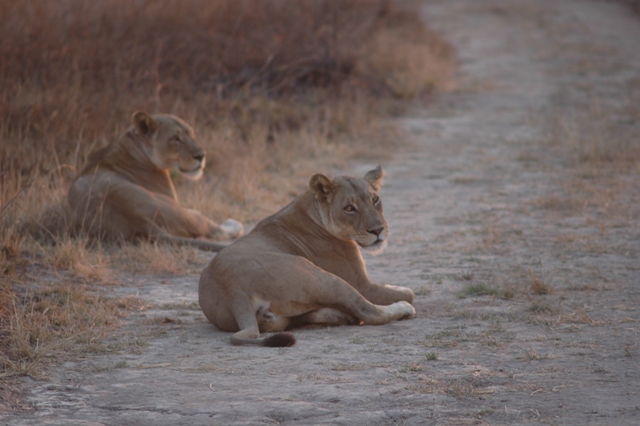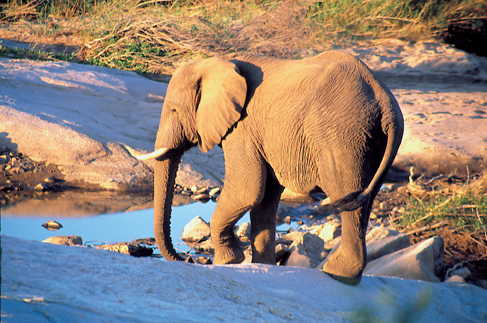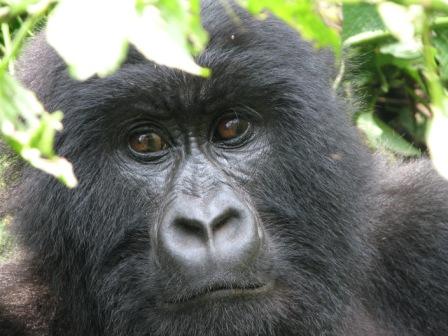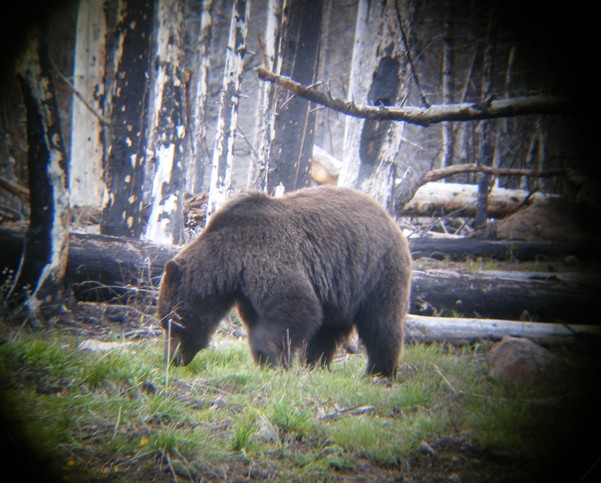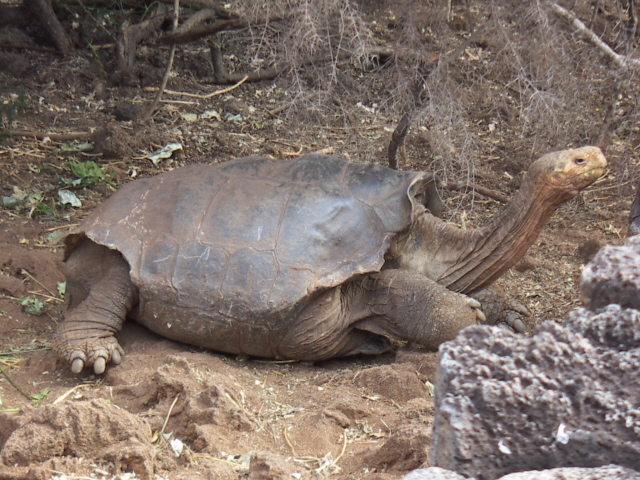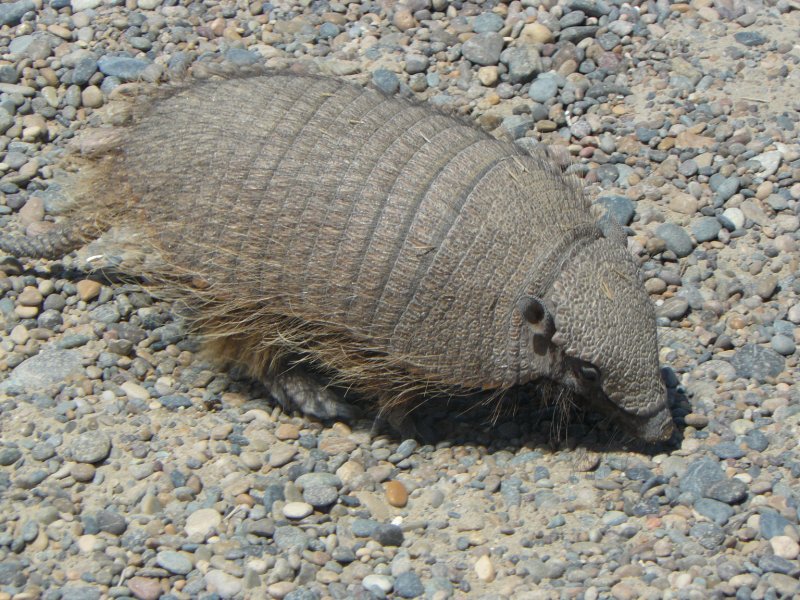Famous Wildlife Preserves
Travel Guide General Guides Famous Landmarks Famous Wildlife Preserves
Introduction
One of the great travelling experiences is to come eye to eye with animals and other creatures which you haven't seen before or are likely to see during your every day life, well except for the nearby zoo of course. Travelling across the world and seeing those wild animals roaming freely across the African plains or swimming in the oceans is high on most traveller's lists and is a must to understand how special this planet actually is. A trip to certain wildlife preserves can show travellers the blending of wildlife and the every day life for certain groups, thus making a combined trip with culture and nature a possibility.
Africa
Kafue National Park
- Where: Western Zambia
- Claim to fame: largest park in Zambia and second in Africa
Kafue National Park is the largest national park in Zambia, and the second largest in Africa, with an area of 22,400 square kilometers and is located in the central west of the country. There are over 50 different species of mammal to be seen here and hundreds of species of birds. The Kafue River is the central hart of the park, and is of importance especially during the dry season when water is more scarce. The park is easily reached by private car along the road from Lusaka to Mongu, but getting there by public transport requires some more planning. The Zambezian flooded grasslands in the north of the park is one of the highlights of the park, with many species like antelopes and along with them many predators, like lion and leopard. In general, the north has better facilities, like lodges and roads compared to the south, mainly because animal density is just higher up north.
Kruger National Park
- Where: Northeast of South Africa
- Claim to fame: Easiest and safest park to drive and see lots of wildlife
The Kruger National Park is located in the northeast of South Africa and has recently been joined by parks in Mozambique and Zimbabwe to form a huge transfrontier peace park.
Kruger is one of the most biodiverse national parks in South African and in fact in the whole of Africa. Huge varieties are reported amongst the mammals as well as birds, plants and even fish! No less than 147 different mammals exist here and tens of thousands of buffalos and zebras roam the park. Other animals easily spotted are elephants, crocodiles, hippos, giraffes, several species of antelope and predators like lions and the somehow more elusive leopard. Cheetahs, African wild dogs (only 250) and black rhinos are all present as well, but numbers are more limited. There is a downside to all this though because many roads are now tarred and huge numbers of tourists visit Kruger because it is easy and part of the year it even is malaria free!
Madikwe Game Reserve
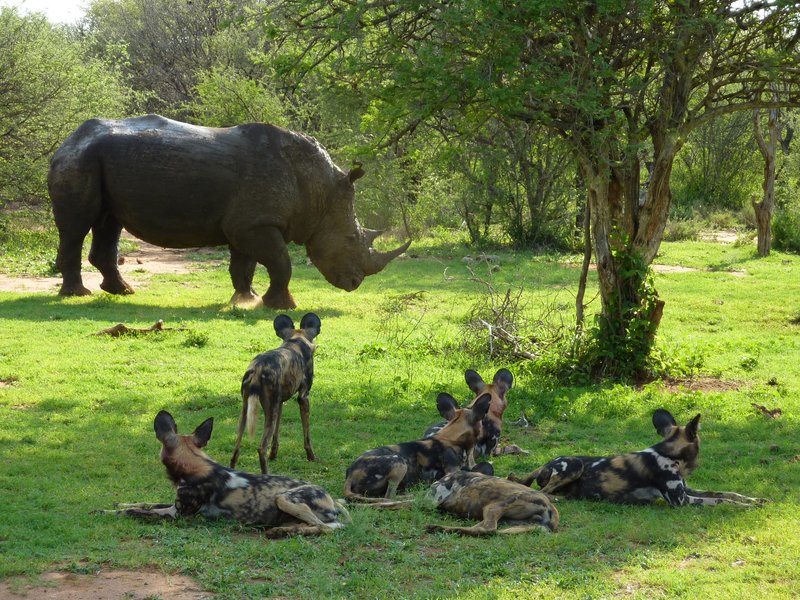
African Wild Dogs meet White Rhino
© Utrecht
- Where: North West Province, South Africa
- Claim to fame: Almost guaranteed to see African Wild Dogs, arguably the best and least crowded park in South Africa
The Madikwe Game Reserve is an off the beaten track park in the central north of the country. In the north the border of the park forms the border with Botswana. Despite the fact that it might not be known to the general public, it is the 5th largest park in South Africa and is regarded as one of the better conservation areas in Africa. It offers all the major species, including lion, leopard, elephant, buffalo, both white and black rhino (Big Five) along with almost all the regular antelope species on these plains. The park can be reached by a short drive from Pilanesberg National Park (see below) via a good gravel road. There is only one relatively affordable accommodation but prices are already around $200 a night! For more information check the official Madikwe Game Reserve website.
Mountain Gorillas
- Where: Central Africa
- Claim to fame: the only place in the world to see Mountain Gorillas
Although this is not about only one park, the special place that Mountain Gorillas deserve to prevent them from extinction, is good enough to list several of the parks where you can see them. In Rwanda there is the Volcanoes National Park, in Uganda the Bwindi Impenetrable National Park and in the Democratic Republic of Congo there are the Virunga National Park and Kahuzi-Biéga National Park, although the latter is seldom visited due to the unstable position of the country. A trip doesn't come cheap, 500 USD in Rwanda and Uganda and 350 USD in the DRC and are best booked well in advance, especially when you want to visit the Bwindi park. See the three country articles for some more information.
Ngorongoro Crater
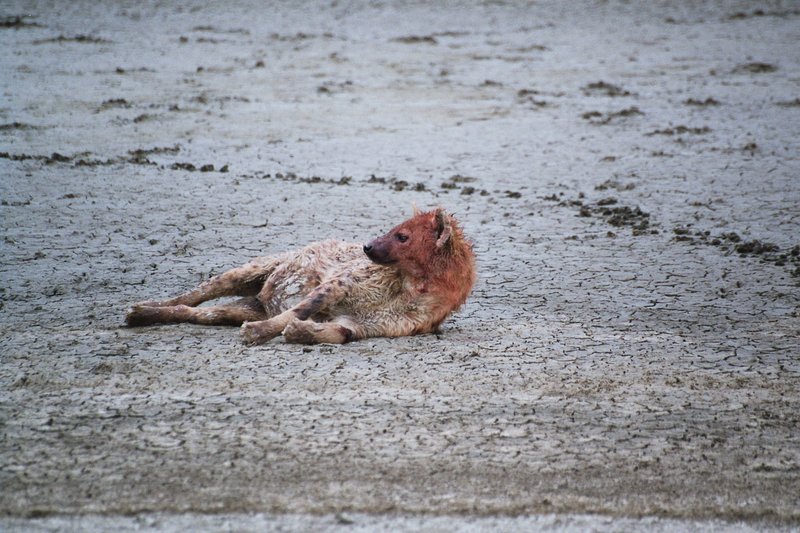
After a good meal in Ngorongoro
© Utrecht
- Where: Northern Tanzania
- Claim to fame: the Garden of Eden; the biggest concentration of wildlife in Africa
The Ngorongoro Crater with its steep walls of 610 metres has become a natural enclosure for a very wide variety of wildlife, including most of the species found in East Africa, except the giraffe. Aside from herds of zebra, gazelle and wildebeest, the crater is home to the "big five" of black rhinoceros, lion, leopard, elephant and buffalo, and is often an excellent chance to see wildlife. Be aware that the black rhinoceros does not like the wind, so in windy conditions it will retreat to the forests in the crater, making it much harder to find. Local Masai, generally clad in their distinctive red clothing, have grazing rights in the crater.
Okavango Delta
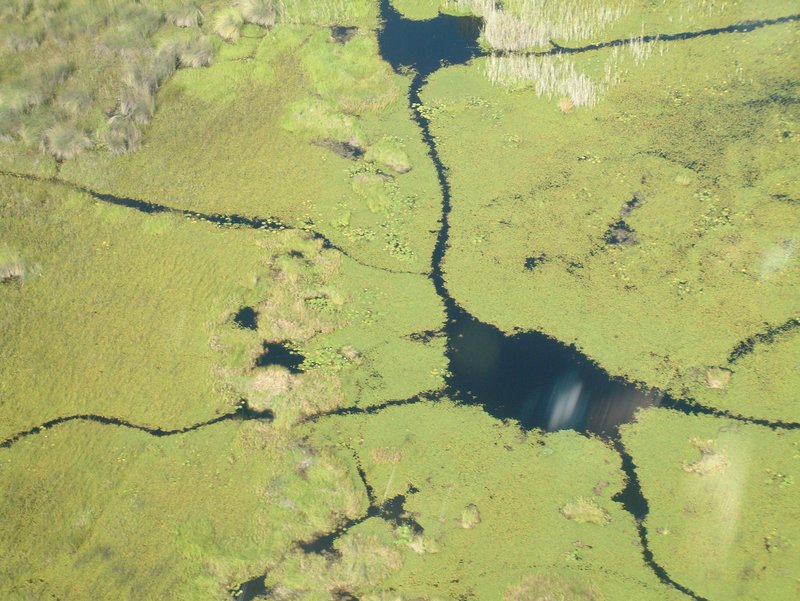
Okovango from the air
© baluba
- Where: northwest of Botswana
- Claim to fame: world's biggest inland delta
The Okavango Delta is the world's biggest inland delta and is located in the north west of Botswana. The Okavango river does not have an outlet into the sea and instead it ends in the middle of the Kalahari desert where it floods an area as big as 15,000 square kilometres. The flooding starts in the north at the end of the year (December) and hits the south about 5 or 6 months later in May. You will be rewarded when visiting this rather expensive place to visit, as the area is teeming with wildlife and a trip in a dug out canoe, a mokoro, is one of the highlights o this magnificent area. Crocodiles and hippos roam the waters and elephants, zebras and giraffes are here in huge numbers.
Pilanesberg National Park
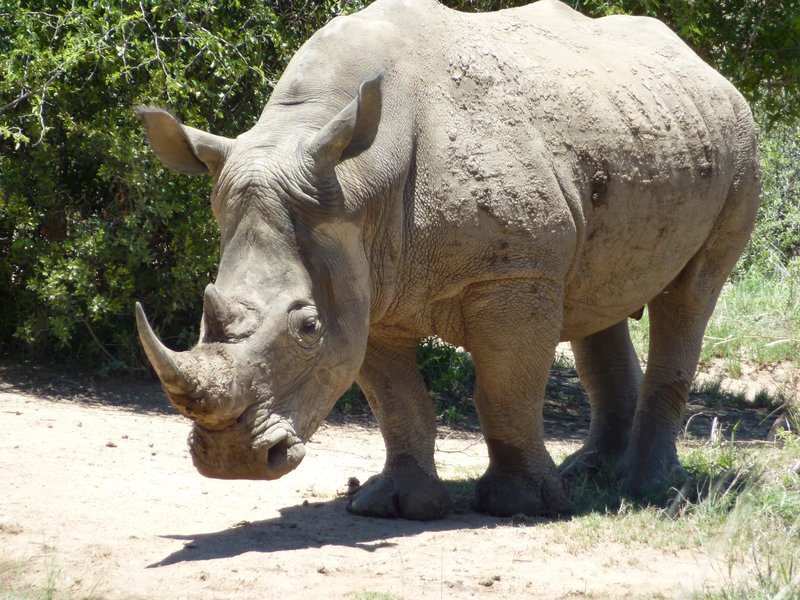
White Rhino, Pilanesberg Game Reserve
© Utrecht
- Where: North West Province, South Africa
- Claim to fame: best and easiest access to Big Five from Johannesburg
The relatively small Pilanesberg National Park (around 580 square kilometres) is located just a few hours of driving northwest from Johannesburg and Pretoria near Sun City and despite the fact that it is small, there are huge numbers of animals. It is a park which is somehow undervalued but for no apparent reason. The park is centred around a crater of a long extinct volcano and Pilanesberg is one of the largest volcanic complexes of its kind in the world, with rare rock types and structures making it a unique geological landmark. The park has enormous numbers of both birds and mammals, and although for some mammals this wouldn't have been their national habitat, numbers have been introduced here in the 1970's and have been growing ever since. Lions, elephants, white and black rhinos, buffaloes, leopards, zebras, hyenas, giraffes, hippos and crocodiles are all present, but not in the numbers you would find in Kruger National Park. On the other hand, you can visit most of the park in 1 or 2 days, so densities are almost comparable. Have a look at the official Pilanesberg Game Reserve website for more information.
Serengeti/Masai Mara
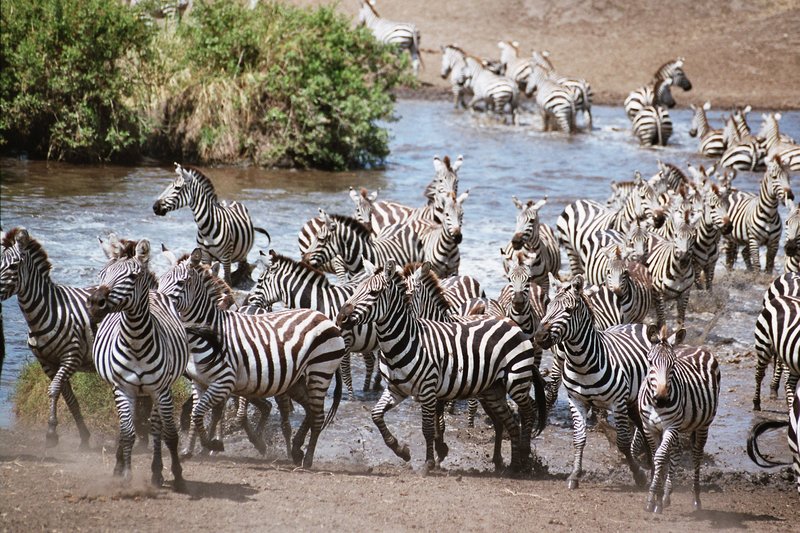
Zebras in the Serengeti
© Utrecht
- Where: Northern Tanzania, southern Kenya
- Claim to fame: annual migration
Serengeti National Park is Tanzania's oldest and most popular national park and equals South Africa's Kruger NP as one of the best and famous parks in the world to see huge numbers of wildlife. The Serengeti is famed for its annual migration, when some millions of Thomson's gazelles, antelopes, zebras and wildebeests migrate across the open plains searching for fresh food and water. The Serengeti is as you'd expected and African safari to be, with savanna landscapes as far as the eye can see. Across the border in Kenya is the Masai Mara, probably just as familiar and because in fact together they form one ecosystem, both are mentioned here. The migration of animals does not take any notice of national borders and when the rains hit Kenya, so do the wildebeest, antelopes and zebras. As a consequence, predators are better spotted as there is more prey in certain places at certain times. It is very difficult though to predict the pattern exactly as it all depends on when and where the rain falls. Timing your trip therefore is no guaranty, but that doesn't matter, as there is enough wildlife anywhere anytime in these magnificent East African parks.
South Luangwa National Park
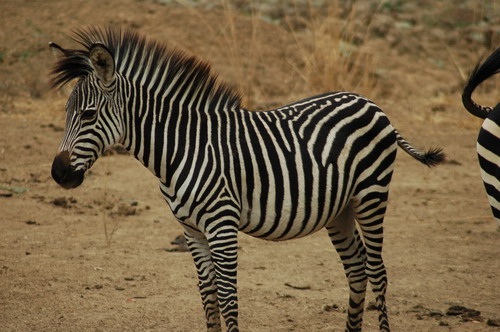
Zebra
© wian
- Where: Eastern Zambia
- Claim to fame: best walking safaris in Africa
The South Luangwa National Park is 9,050 square kilometres big and is located in the east of Zambia, towards the border with Malawi and is one of the finest parks in Africa with high densities regarding animals, especially around the central river. The park is one of the pioneers regarding walking safaris and nothing beats standing eye to eye with an elephants or lion, of course at a safe distance. There are around 60 different species of mammal, and over 400 species of birds, making it one of the most diversified parks in Africa as well. Access to the park is limited during the rainy season from the end of November until April, sometimes even impossible. Mfuwe is the gateway to the park and flights to and from Lusaka are possible on almost every day and buses from Lusaka take at least around 16 hours and you will need to change buses as well.
Asia
Bandhavgarh National Park
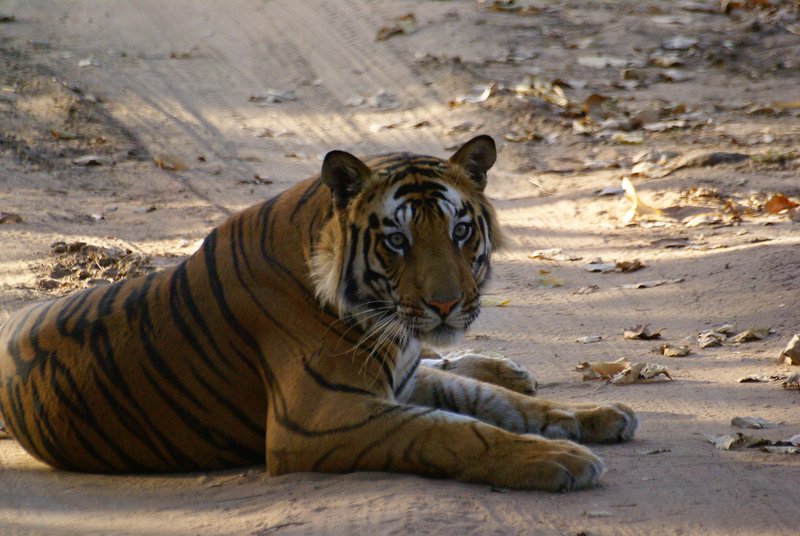
The most beautiful cat in the world! Bandhavgarh National Park
© Utrecht
- Where: Madhya Pradesh, India
- Claim to fame: highest tiger density in the world
Bandhavgarh National Park is number one when it comes down to spotting tigers in the world! It is located in the central Indian state of Madhya Pradesh. Although it's just over 400 square kilometres big, it boasts the highest tiger density in the world, with an estimated 55 Bengal tigers in the park, of which an estimated 22 tigers are located in the core area of the park. Apart from tigers, there are also quite a few leopards, but these are less common sights as they tend to move around at night, while tigers also move around during the early cool mornings or late during the afternoon. Other species to see are hundreds of spotted deer (chital) and sambar, the largest antelope species in India. Barking deer, wild boar and numerous species of birds (of prey) are other animals commonly seen.
Danum Valley Conservation Area
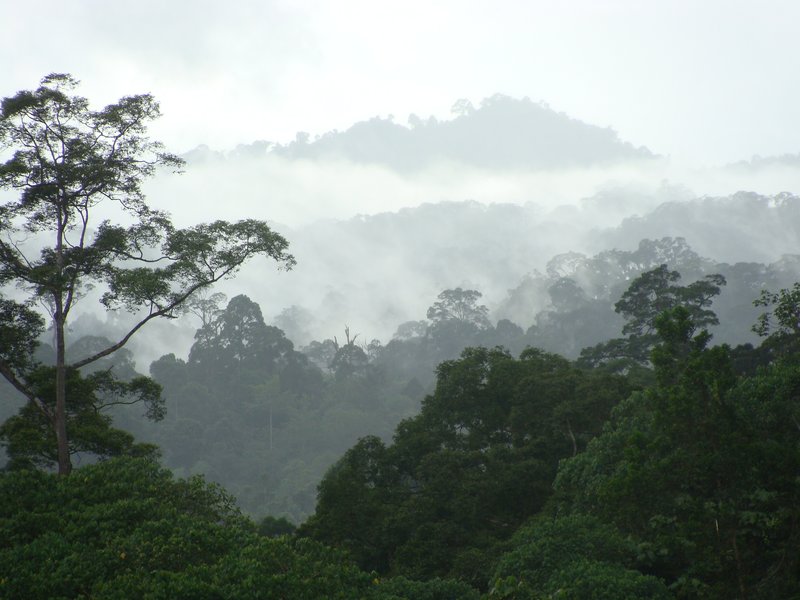
danum valley - heaven
© TheBones
- Where: 82 kilometres west of Lahad Datu, Sabah, Malaysia
- Claim to fame: Home to many mammal species, including orangutans, clouded leopards, borneo pygmy elephants and the Sumatran elephant
The Danum Valley Conservation Area, a must see spot for all nature lovers, is a 438 km² protected area of virgin rainforest in the eastern part of Sabah, Malaysia. Within this area it is possible to see a wide variety of Borneo's world famous plant and wildlife, including orangutans, clouded leopards, Sumatran rhinos, mouse deer, gibbons, and Borneo pygmy elephants. Over 270 bird species have been recorded in the Valley.
Kanha National Park
- Where: Madhya Pradesh, India
- Claim to fame: park with one of the highest numbers of tigers in the world
Kanha National Park is a huge and beautiful park in the central Indian state of Madhya Pradesh. With about 940 square kilometres it is one of the biggest national parks in the country and prime tiger area! The park is mainly made up of sal forests and vast meadows and is home to an estimated 100 tigers.
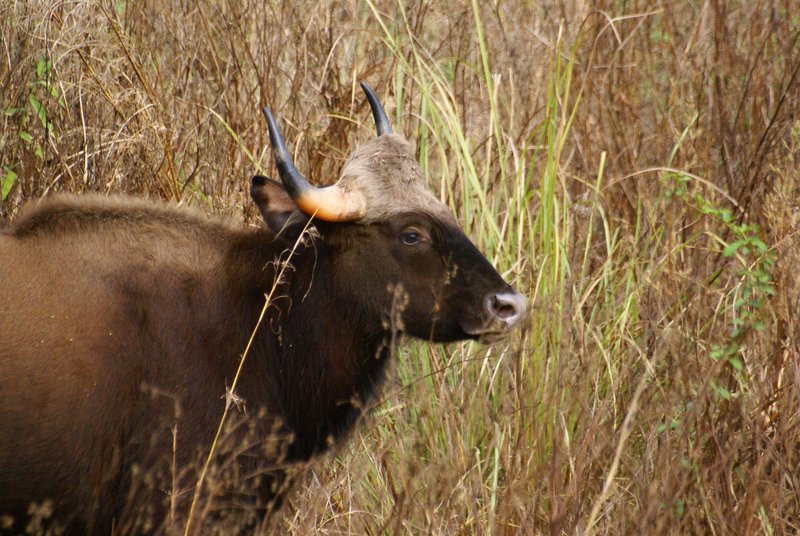
Gaur (Indian Bison), Kanha National Park
© Utrecht
There are also leopards, wild dogs and sloth bears although these are less common sights. Barking deer, sambar and chital (spotted deer) are quite common though, and the park is also home to the barasingha (swamp deer), one of the rarest animal on the planet! The barasingha was close to extinction (with only around 60 left) but now there are around 1,200 in Kanha National Park, the only place in the world where they can be seen in the wild. More species to see include mongoose, jackal and the big gaur (India bison), and numerous species of birds (of prey).
Royal Chitwan NP
- Where: Central Nepal, west of the capital Kathmandu
- Claim to fame: one of the best places in Nepal to see tigers and rhinos
The Royal Chitwan National Park was established in 1973 and contains 932 square kilometers with a diversity of ecosystems-including the Churia hills, Ox-bow lakes, and the flood plains of the Rapti, Reu and Narayani Rivers.
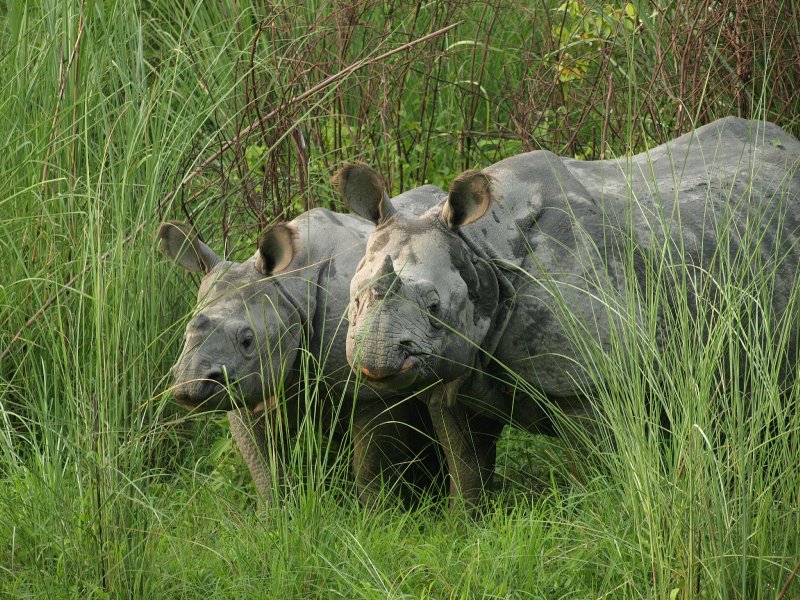
Rhinos
© FiColes
It is located west of Kathmandu at the foot of the Himalayas and is one of the few remaining undisturbed vestiges of the 'Terai' region, which formerly extended over the foothills of India and Nepal. It has a high biodiversity which makes this park unique in Nepal and wildlife includes one of the last populations of single-horned Asiatic rhinoceros and several dozens of Bengal tiger, although the last one is a matter of pure luck to see this elusive big cat. It is placed on the Unesco World Heritage List.
Sepilok Orangutan Rehabilitation Centre
The world-renowned Sepilok Orangutan Rehabilitation Centre was set up in 1964 to rescue and rehabilitate orphaned baby orang-utans from logging sites, plantations and illegal hunting.
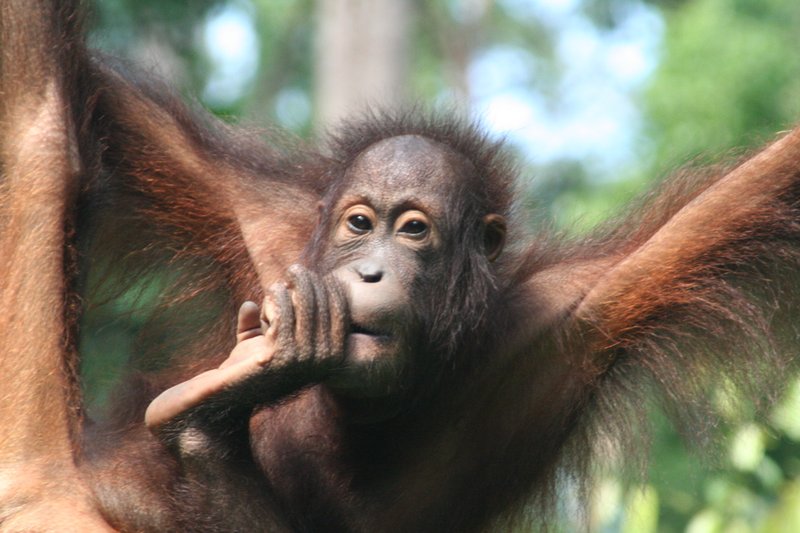
SV07 - Sepilok - Orang5
© agc_cwm
These orang-utans are taken care of, brought up, and trained to survive in the wild. They will be released into the wild once they are ready. Visitors will be able to see these orang-utans up-close in their wildlife habitat as well as going on trekking and river expeditions.
Located within the Kabili-Sepilok Forest Reserve, the centre also educates the public on conservation, and conducts research on other endangered species such as the rhinoceros. The sanctuary is one of the top tourist attractions in Sabah.
Tabin Wildlife Reserve
- Where: 50 kilometres northeast of Lahad Datu, Sabah, Malaysia
- Claim to fame: Home to many mammal species and all eight Hornbill species.
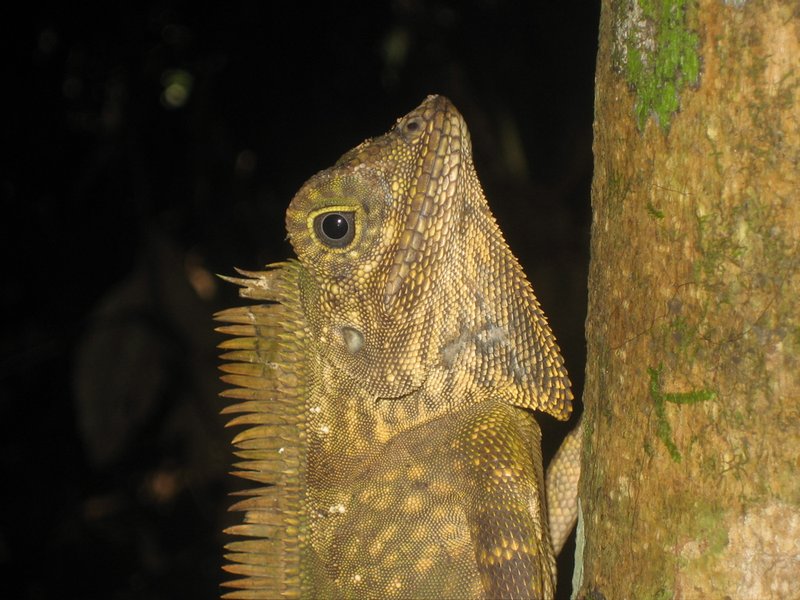
SV07 - Tabin - Lizard3
© agc_cwm
The Tabin Wildlife Reserve consists of 120,500 hectares of diverse rainforest located on the eastern coast of Sabah near Lahad Datu. Tabin Wildlife Reserve is a dedicated breeding ground for wildlife and birdlife, including the Sumatran Rhino and the Borneo pygmy elephant. The reserve was the winner of "The Most Promising Attraction 2003" given by the Malaysia Tourism Awards.
Europe
While there aren't any big wildlife preserves in Europe there are still some amazing little gems there among all the civilisation.
- The Alps - Despite heavy tourism the wildlife of the mountain range is still relatively intact and in the various national parks one can see eagles, ibex, hares, deer and if one is very lucky the rare lynx. The largest national park is the national park Hohe Tauern, spanning several mountain ranges, in three regions.
- Bialowieza National Park - The Bialowieza National Park contains the Bialowieza Forest and is an ancient woodland straddling the border between the Belarus and Poland. They both have their own national parks, which are home to the last surviving European Bisons. The forest is located 70 kilometres north of Brest (Belarus) and 62 kilometres southeast of Białystok (Poland). It is one of the last and largest remaining parts of the immense primeval forest which once spread across the European Plain. It's a natural UNESCO World Heritage Site.
- Parc Regional de Camargue, Provence, France - 820 square kilometres in a marshy river delta at the mouth of the Rhone river as it flows into the Mediterranean Sea. Home to the Camarque horses, a distinctive and very old breed of wild horses.
- Oostvaardersplassen - Just a little bit outside Amsterdam in the Netherlands this is an artificially created refugium for wild life. It came into being thanks to the drainage of the IJsselmeer in the 1960s. Originally it was planned to establish heavy industry in the area, but the land was allowed to lie fallow. It quickly became a haven for many birds. Seeing the development it was turned into a national park and it was decided to release Konik horses, Heck cattle and red deer in the area. Today it is home of the only herd of wild Heck cattle in the world and hosts countless birds on their yearly migration.
- Wadden Sea - Covering the North Sea coast in Denmark, Germany and the Netherlands the Waddensea is a tidal mudflat marsh. It is home to some unique animals adapted to the harsh living conditions there. It is relatively easy to explore the area, all one has to do is go hiking in the area. Note that for your own safety you must join a guided tour or risk drowning by the returning flood. For more information, also see the Wadden Islands article.
- Swidwie nature reserveis a nature reserve protecting one of the most biologically diverse habitats of water and wetland birds on the lake of the same name. It is one of a set of places to protect under the Ramsar Convention on Wetlands of International Importance especially as Waterfowl Habitat. Swidwie Lake is located in Wkrzańska Forest, in Poland, near border with Germany, between Szczecin, Police, Nowe Warpno and Pasewalk. The access to this area is possible from the village Zalesie near Police.
North America
Yellowstone National Park
- Where: Wyoming, in the Rocky Mountains, USA.
- Claim to fame: Home to countless endangered and threaten species, also for the successful reintroduction of wolves.
Yellowstone National Park is one of the most famous parks in the world. Although mainly known for its geothermal activity this park is also famous for being the home to countless wildlife species. This includes large herds of bison, one of the few places in North America were they live still in the wild. There also many other animals like wolves, grizzles, lynxes, elks, pronghorns, and moose. Some animals are very easy to spot from a car while others live very deep in the park and would take lots of time and energy to find. A trip to Yellowstone will allow any visitor at least to glimpse many kinds of animals, even if it is a bison just relaxing on the side of the road.
Oceania
Great Barrier Reef
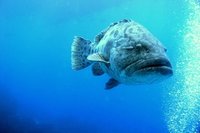
Potato Cod...
© stefan
- Where: Off the northeastern coast of Australia
- Claim to fame: Largest coral reef system in the world
The Great Barrier Reef is the largest coral reef system in the world. It's no surprise that it is also one of Australia's most popular natural attractions. It is located off the coast of Queensland in northeastern Australia and stretches for some 2,600 kilometres, comprising 3,000 individual reefs and 900 islands. A large section of the reef falls within the Great Barrier Reef Marine Park, which was set up to protect it from the negative impacts of overfishing and tourism. Climate change forms a major threat to the reef with rising water temperatures causing mass coral bleaching.
South America
Amazone
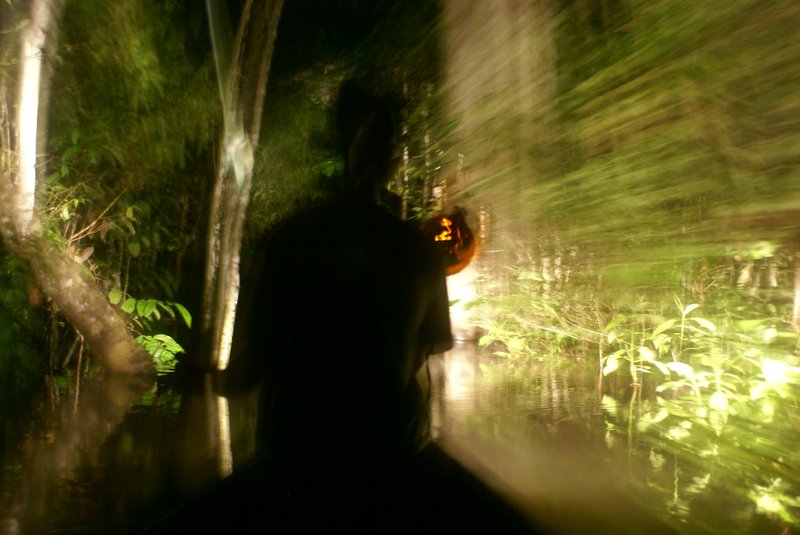
Night spotting in the Amazon
© Utrecht
- Where: South America, Brazil has the largerst part
- Claim to fame: largest rainforest in the world
The Amazon Rainforest contains over half of the rainforest in the world and is by far the largest rainforest with about 7 million square kilometres. Although the Amazon contains hundreds of rivers, the Amazon River itself is the most important one and arguably the longest in the world (the Nile claims the same) with about 6,600 kilometres. Although wildlife here is generally much harder to spot compared to the Galapagos Islands and the Pantanal, the Amazon contains of the most biodiverse ecosystems in the world with tens of thousands of species of flora and fauna. Sloths, anacondas, dolphins, monkeys, birds, butterflies, insects (the most annoying animals probably), fish like the piranha and elusive predators like the jaguar and puma all reside here, but seeing some of them is a matter of pure luck. You will however most like see dolphins, sloths, caiman and many species of birds during a trip into the forest.
Galapagos
- Where: Pacific Ocean, 1,000 kilometres west of Ecuador
- Claim to fame: best place in the world to see megafauna
The Galapagos Islands is one of the best places to experience the sight of some rare and endangered species of animals. Some animals are so strange you wouldn't have thought they were actually alive and because they are generally extremely timid you can watch them all up close, both above as well as under water. Most of the animals here are considered megafauna. Megafauna defines animals which live in a small environment devoid of major predators and as a consequence have become larger and extremely specialized, filling a different niche.For a wider explanation and more depth of with animals to expect, have a look at the Wildlife In The Galapagos article.
Pantanal
- Where: southwest of Brazil and parts of Bolivia and Paraguay
- Claim to fame: world's largest continuous wetland
The Pantanal is the world's largest continuous wetland with a total area of more than 200,000 square kilometres.
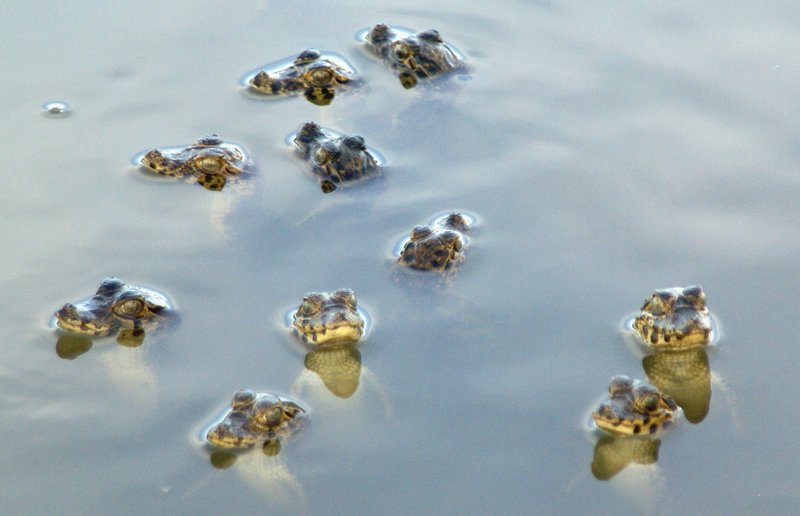
Little Caymans, Pantanal
© Utrecht
It is one of the best places in the New World to watch wildlife as a wide range of mammals, birds, reptiles, butterflies and other sorts of creatures can easily be seen in their natural habitat. One of the most striking animals is the capybara, the world's biggest rodent which can grow as big as small pig occasionally. You will definitely see lots of caimans and dozens of sorts of aquatic birds as well. The blue hyacinth macaw is one of the biggest sorts in the world you can encounter here. Anacondas and giant river otters live in the rivers as well, but you need a little bit of luck to see them. Bigger animals include the tapir and predators like the jaguar, although the last one is very elusive and seeing one of these magnificent animals requires luck and some venturing deeper into the Pantanal.
Peninsula Valdéz
- Where: Central Atlantic coastline of Argentina
- Claim to fame: largest number of whales during mating season; several rare kinds of pinguins
The Peninsula Valdes is a large natural paradise with significant numbers of mainly marine animals. It is located along the Atlantic coastline of Argentina in the Viedma department, northeast of Chubut province. Most of the peninsula is barren land with low lying salt lakes, even up to 40 metres below sea level. It was declared a Unesco World Heritage Site in 1999. Animals include sea lions, elephant seals, fur seals, souther right whales (May to December), orcas (a little further on open sea) and mainly guanacos and maras on the central parts of the peninsula itself. For more information (especially on whalewatching) check the information on the Puerto Piramides website, the main small settlement on the island, together with some sheep farms where you can sometimes stay.
Contributors
 Utrecht (70%)
Utrecht (70%)
from https://utrecht.travellerspoint.com
as well as hasbeen (8%), Hien (5%), Peter (4%), t_maia (4%), Lavafalls (4%), agc_cwm (3%), bentivogli (<1%), Herr Bert (<1%)
Famous Wildlife Preserves Travel Helpers
We don't currently have any Travel Helpers for Famous Wildlife Preserves
This is version 62. Last edited at 8:54 on Dec 6, 19 by Utrecht. 3 articles link to this page.

Except where otherwise noted, content of this article is licensed under a Creative Commons Attribution-ShareAlike 3.0 License


